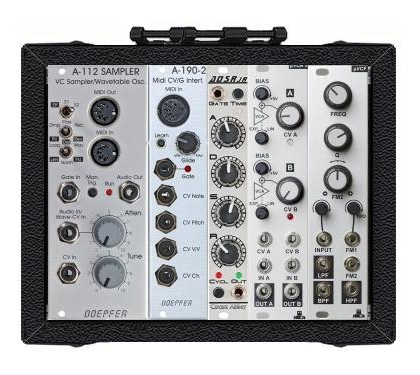
A criticism two posts back of the repetitiveness or sameness of recent modular synth music inspired the putdown of modular as "sounding like a demo of gear I can't afford."
It's affordable if you want it -- most of the "racks" wigglers are playing with weren't bought at one go but in increments over several years. The beauty of it, in a way, is that you can assemble the sounds you want, at the pace you want, over time, as opposed to plunking down a single large investment for an instrument someone else "hard-wired."
The instrument above, an 8-bit sampler/wavetable synth with filter that acts as a second oscillator, is hypothetical: assembled in a virtual synth rack planner. If it existed it would cost just under $1000, as compared to, say, the Waldorf Blofeld tabletop synth, for half that price. But you'd be putting this together in installments. The sampler module alone is $220.
That same module, the Doepfer A-112, is the subject of an excellent Soundcloud demo that (contrary to that earlier post) transcends demo-dom to become intriguing music in its own right. It also inspired software to control it from outside, in an analog-digital hybrid scenario.
A single computer with a decent sound card can make plenty of bodacious music inexpensively. The move to modular music was (among other things) a reaction to the limitations of laptop music: wanting to get physical movement, the hum of wires, and artisanal, "distributed" engineering into -- or back into -- the process. If you have this urge, it's affordable.
